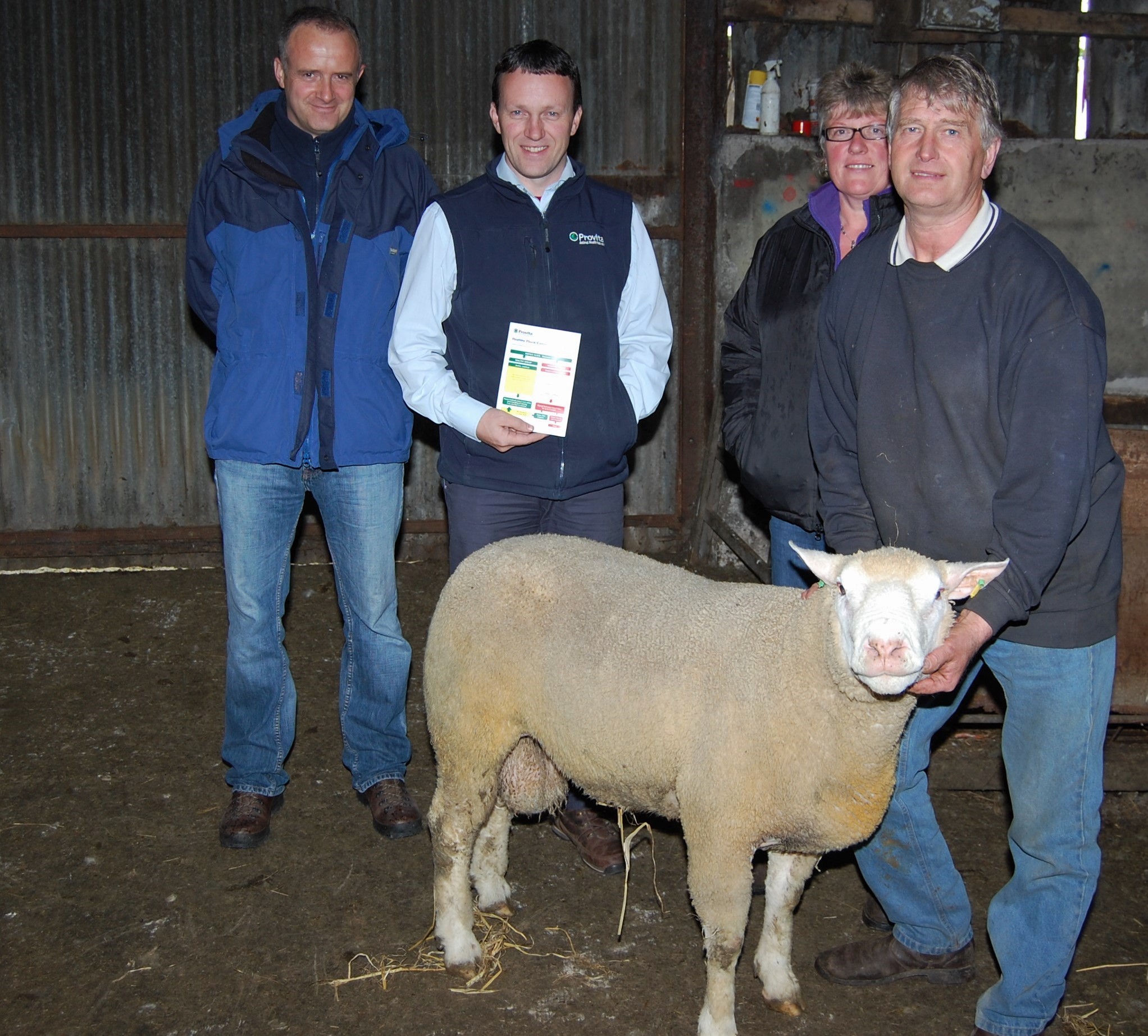Scald if left untreated can develop into full blown footrot, according to Provita’s Tommy Armstrong. This was the main message he delivered at the recent sheep lameness workshop hosted by Carrickfergus pedigree Ile de France breeder Edward Adamson.
“Scald will develop if lambs and ewes are put out into fields where longer grasses predominate,” he added.
“Good grazing managment such as taking out fields for round bales or regular topping of paddocks is therefore essential. This practice should be accompanied by a commitment to regular foot bathing.”
Edward Adamson said that ewes with lambs should be foot bathed every two weeks.
“For ewes that have been weaned this can be stretched out to 6 weeks,” he added.
Both men agreed that it is also important to put sheep on to fresh grass after foot bathing.
“This breaks the cycle in terms of sheep becoming predisposed to the bacteria that cause Footrot,” said Armstrong.
“Once scald becomes prevalent the bacteria that cause footrot, which are present in swards, can gain easy access to the softer tissue surrounding the hoof.”
“There are a number of options on the market including copper and zinc based formulations, plus formaldehyde. Each has its own downside.
“Copper for example, is poisonous to sheep and is environmentally problematic, formaldehyde is a proven carcinogen, and zinc requires 20 minutes to work.
“In contrast, Provita’s Hoofsure Endurance is based on organic acids. It is non-toxic, biodegradable and has an excellent track record in helping to prevent scald and footrot.
“It is important to ensure that the foot bath is calibrated properly and that the solution used is of the exact strength recommended. The Provita hoofcare booklet explains how to implement a health flock control strategy, using the footbath solution, topical spray and gel.
Adamson said that he places sponge matting on the bottom of the footbaths used on his farm.
“This reduces the amount of spillage that can occur, thereby reducing the volume of solution required,” he added
When dealing with footrot cases, Adamson pointed out that he does not favour excessive paring of affected hooves.
“This leads to the drawing of blood, which is totally counterproductive when it comes to dealing with the problem. It’s also important to disinfect clippers each time they have been used on an individual animal. This will help minimise the spread of the problem.
“I have also made it a policy on the farm to preferentially cull ewes that are pre-disposed to Footrot problems and not to breed replacements from these animals. And this approach has certainly proven to be an effective management strategy.”
There was a brief discussion on how best to manage an outbreak of Contagious Ovine Digital Dermatitis (CODD) in sheep flocks.
Armstrong explained that the characteristic clinical picture is a primary lesion at the coronary band of the outer wall, with subsequent invasion and under-running of the hoof wall from the coronary band towards the toe causing detachment, then shedding of the horn capsule.
“If its not successfully treated in two attempts culling of all affected sheep is advised,” he added.
Both Adamson and Armstrong advised that all bought in sheep should be isolated for a number of weeks.
“This gives the flockowner an opportunity to gauge if problems such as CODD have been imported on to the farm without the condition spreading to the existing flock members,” stressed Adamson.
Prevention can be achieved with Hoofsure Endurance from 50p per ewe per year. A special offer is available at participating outlets; get a free 5’ sheep footbath with the purchase of 1x20Ltr of Hoofsure Endurance.
